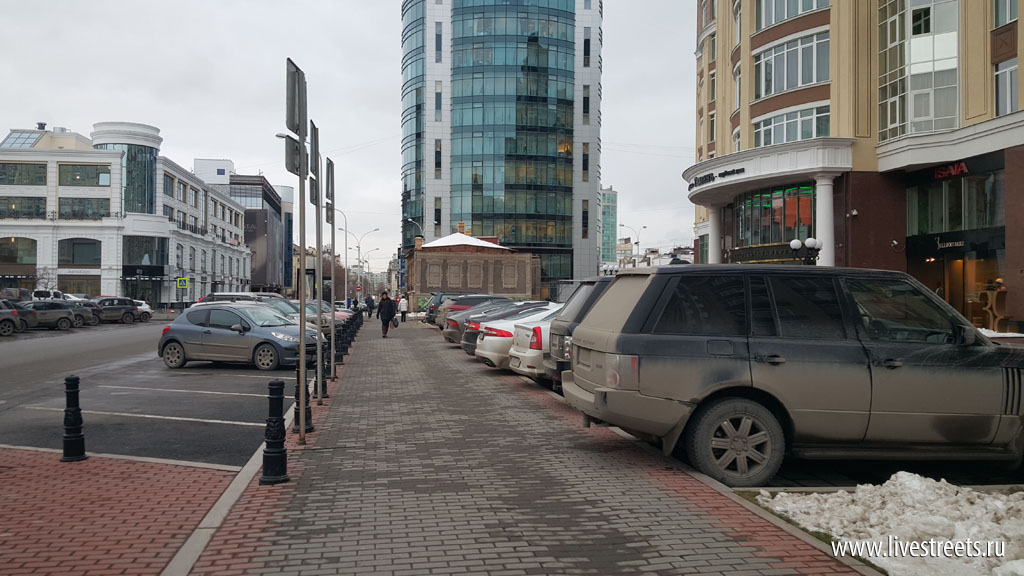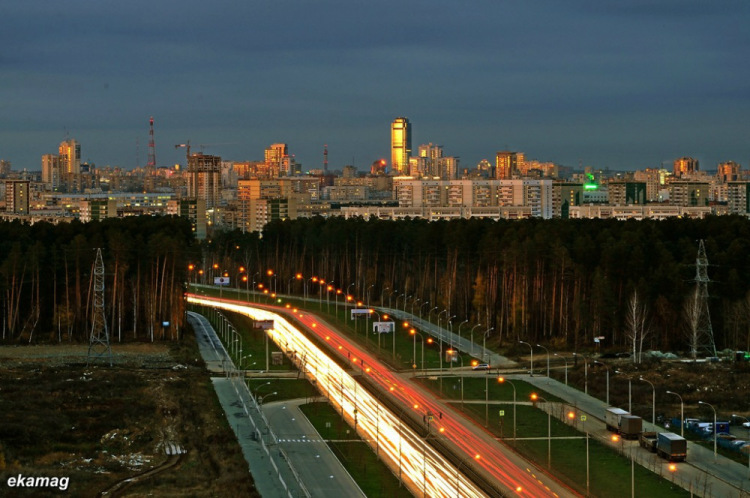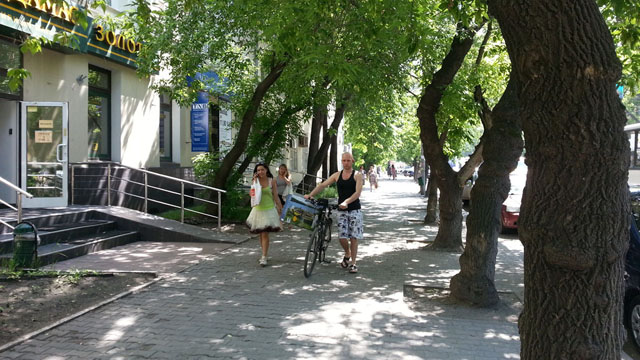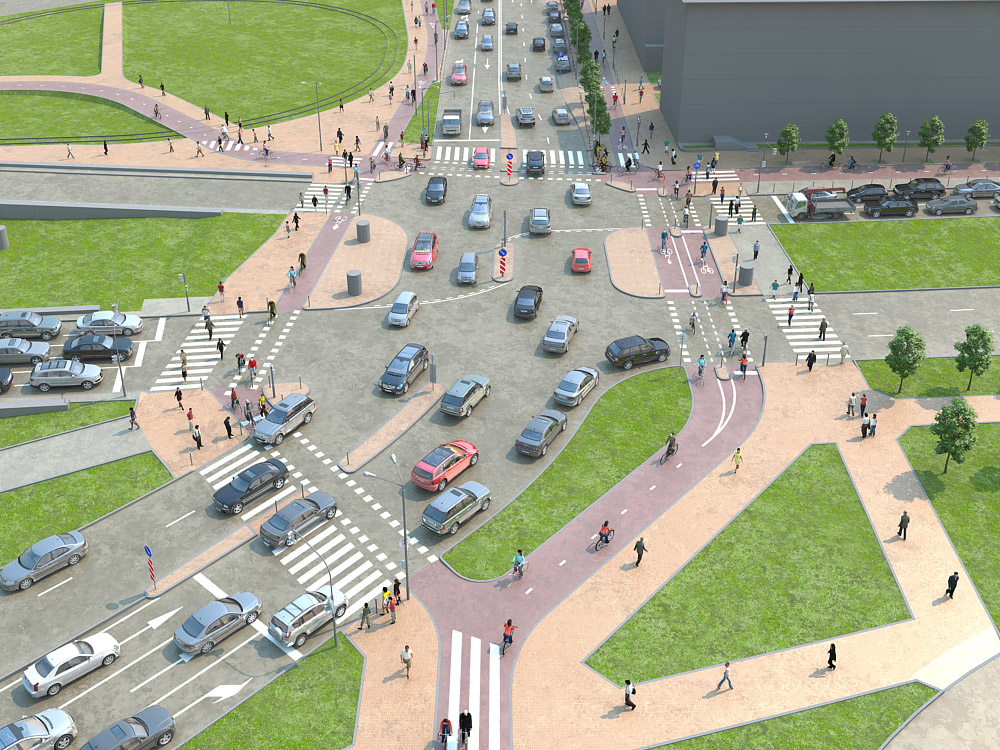 Yekaterinburg town hall published a transportation development plan for the next 3 years. The plan consists of 30 projects of which 28 are road building and widening and only 2 are devoted to public transport. There’s also a remarkable foreword to the plan which states that our city’s congestion problems are caused by the increased income of the citizens. That’s right – folks got rich and bought a lot of cars. The automobilization level in Yekaterinburg reached 320 cars per 1000 people which make it 2nd after Moscow. This turned out to be too much and the cars stopped fitting in the street space. That is how (according to the city government) Yekaterinburg fell victim of its own success.
Yekaterinburg town hall published a transportation development plan for the next 3 years. The plan consists of 30 projects of which 28 are road building and widening and only 2 are devoted to public transport. There’s also a remarkable foreword to the plan which states that our city’s congestion problems are caused by the increased income of the citizens. That’s right – folks got rich and bought a lot of cars. The automobilization level in Yekaterinburg reached 320 cars per 1000 people which make it 2nd after Moscow. This turned out to be too much and the cars stopped fitting in the street space. That is how (according to the city government) Yekaterinburg fell victim of its own success.
City officials see the solution to congestion in steet widening, building new road and interchanges, and removing obstacles to car traffic. This may sound logical but in reality it will just make things worse. Increasing the capacity of roads will bring relief only in short term. In the long run however people will see the improvements and start driving more, consuming the new capacity and returning the level of congestion to equilibrium but with more cars on the road. This phenomenon is known as induced demand (or in this case – induced traffic) and characterized by the situation when after supply increases, more of a good (in this case – road capacity) is consumed. This demand could have stayed unrealised or could have been transformed to another kind of demand (transit trips for instance if there were good transit options). The potential of traffic growth in Yekaterinburg in enormous. Present motorists will easily find reasons to drive more when the roads get widened while the level of car ownership (which is now considerably lower than in average European city) will continue to grow. At least if there’re no improvements in other transportation options. That is why I am convinced that the results of the proposed projects will be leveled by growing traffic in a matter of years. No city in the world have solved the problem of urban mobility by staking on private automobile and there are no reasons why Yekaterinburg could do it (while there’s a number of reasons why it couldn’t).
The mental problem of city officials is that they bind car ownership rate to the amount of car trips while in reality they’re only connected indirectly. Owning a car does not oblige one to drive it every day on every occastion. The car is a great invention of the 20th century which seriously broadened the horizons of personal mobility but like any other mode of transport it is not universal and have its own optimal field of use. For very long distances it is impractical for the traveller who would rather prefer a plane or a train, while for short distances (which are most common in cities) it is impractial for the society in general because the dominance of cars in the city harms the quality of life in many ways. Thus, the solution for urban mobility lies in more sustainable public transit and active transportation, reduction of car trips and it doesn’t lie in attempts to accomodate more cars on the streets.
The town hall’s list contain some good projects (like interchanges on the beltway which would divert traffic from the inner city) and some bad ones (more pedestrian underpasses on the central streets) but it is more interesting what this list doesn’t contain.
1. Complex modernization of public transport. Only 2 of 30 projects on the list are devoted to transit: dedicated bus lanes and a new tramway line along Serova street. Both are planned for as far as 2013. Besides, the tramway line is not supposed to create new transit options but rather to replace the current straight tramline on the 8 Marta street with a ‘crooked crutch’. The officials say that the tram will duplicate the metro which runs along the same corridor in the the center of the city. But in fact since the tram routes are far more diverse in the tramline network than a single metro line that duplication is going to be marginal. The whole idea is aimed at getting two more lanes for traffic jams consealed as taking care of public transport users.
2. Encouraging active transportation. Yekaterinburg being very compact has a huge potential of becoming a great pedestrian city and a great bicycle city. But at the moment pedestrian infrastructure is financed very poorly while cycling infrastructure doesn’t exist at all.
3. Well-thought parking policy. Every time there’s a discussion about traffic restraints people start it with congestion pricing, a controversial measure which is hard to realize. At the same time an average car spend 95% of its life cycle at a parking place. So, having a guaranteed free of charge parking place at every destination is a major incentive to drive. And in Russia ‘guranteed’ doesn’t mean that there are plenty of parking spaces but that it is possible to park without consequences on any driveable horizontal surface on the street. Parking, being free, distorts the real price of a car trip. We haven’t got free apartments, offices or warehouses in the city. At the same time motorists can use a very scarce resource of street space to store their cars for free. Thus, serious street parking restrictions and making the drivers pay for it would be the greatest disincentive to driving. And that’s what the city should start with.
Unfortunately these three items would not appear on the town hall’s agenta anytime soon. I get more and more convinced that the city officials tend not to take notice of modern urban planning practices and there’re no people there any close to leaders like Jaime Lerner, Enrique Peñalosa or Michael Bloomberg. Even more sad than this is that because of the recent changes in municipal elections’ legislation we have lost even a theoretical opportunity to change city policies by electing a new mayor. So I guess the present team will keep pushing obsolete projects on our heads for a long time.







